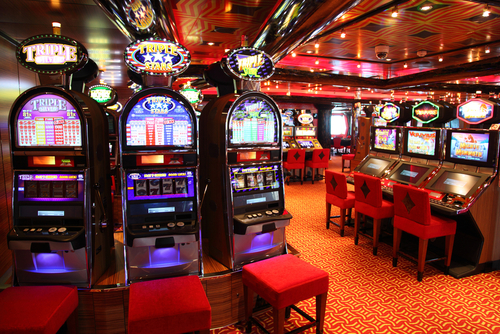
Within the dynamic and stimulating world of casinos, wherein luck and strategy intertwine, hues and design play a critical role in drawing in gamblers. As soon as players step into a casino or log into a gaming platform, they are enveloped in a visual feast that captures their attention and lures them to discover more. Vivid colors, engaging graphics, and creative layouts are carefully crafted to create an atmosphere of excitement and anticipation, ultimately enhancing the gaming experience.
While gamblers navigate through the ever-changing landscape of casino games, they encounter a variety of designs that not only serve aesthetic purposes but also affect emotions and decision-making. Hues like red and yellow symbolize riches and fortune, while calm navy and emeralds can create a more tranquil environment. Grasping how these elements function together enables casinos to create an welcoming and energizing atmosphere that encourages players to engage with the games, invest more time at the tables, and boost their general enjoyment.
The Study of Color in Gaming Establishments
Tint plays a crucial role in the creation of casino games, influencing players’ feelings and responses. Bright and bold colors, such as red and gold, are often used to ignite excitement and capture attention. These colors create a sense pressure and vitality, encouraging players to engage more enthusiastically with the game. By intentionally selecting hues, designers aim to elicit emotions of pleasure and anticipation, which can enhance the overall gaming experience.
Various hues also have psychological meanings that can impact how players perceive their odds of success. For instance, emerald is frequently associated with luck and prosperity, making it a well-liked choice in activities like roulette and poker games. This association can result participants to feel more optimistic and assured in their gaming, ultimately inspiring them to bet more. Comprehending these associations allows game developers to craft environments that enhance player enjoyment and loyalty.
In addition, the design of gaming interfaces often employs gradients and contrasting shades to instruct players’ actions. For instance, successful outcomes may be accentuated with vivid, contrasting colors, creating a visual cue. This approach strengthens favorable outcomes and encourages repeated gameplay. By exploiting the science of color, gambling establishments can design games that not only attract players but also hold them interested and committed in their play experience.
Creative Features that Attract Gamers
The visual appeal of gambling games is primarily influenced by the implementation of vibrant colors. LINK 98WIN Lively and contrasting colors are strategically chosen to create an inviting atmosphere that grabs interest. For instance, crimson and golds often signify luck and wealth, which is why they are common in the palettes of slot machines and table surfaces. These colors not only attract players in, but they also evoke emotions related to excitement and anticipation, enhancing the overall gaming experience.
In addition to color, the design and layout of gambling games play a significant role in captivating players. Games are designed to be intuitive, ensuring that players can easily understand the rules and gameplay. User-friendly interfaces, along with captivating graphics and animations, help maintain gamer interest and promote extended play sessions. The physical elements, such as the feel of the controls and the audio of the games, also contribute to a holistic sensory experience that keeps players engaged.
Finally, conceptual elements in gaming design can greatly influence gaming decisions. Many casino games are inspired by media, fairy tales, or adventure themes, incorporating symbols and characters that connect with players. These themes create a sense of engagement and connection, making each game feel unique. When players feel a connection to the concept, they are more likely to choose that game over others, leading to increased participation and excitement within the gambling environment.
Case Studies: Notable Gambling Table Game Designs
One prime example of impressive casino game design is the acclaimed slot machine series based around popular movies. Games such as those based on the Wizard of Oz and Game of thrones utilize vibrant colors and top-notch graphics to enthrall players in recognizable narratives. The application of moving visuals and entertaining sound effects grabs the attention of players, creating an affective connection to the theme. This tactic not just encourages longer play but also improves the overall gaming experience, yielding increased player retention.
Another effective case is the application of color psychology in table games like blackjack and the wheel. Casinos often develop these games with dark reds and greens, colors traditionally connected with luck and wealth. https://98win.group/ For instance, the green felt on a blackjack table provides a soothing effect, while the crimson accents in the wheel invite excitement. This deliberate use of color helps to foster an inviting atmosphere that stimulates players to participate, satisfying their psychological impulses and increasing their enjoyment.
Finally, online casino games that incorporate social features and vivid, dynamic designs have achieved remarkable success in engaging players. Games like Zynga Poker and Slot-O-Mania leverage vivid colors and playful animations to establish an inviting online environment. The addition of leaderboards, social sharing options, and in-app rewards encourages competition and community, pulling players in for longer sessions. Such designs merely make the games visually enticing but also highlight social connectivity, a crucial factor in player retention and engagement within online casino environments.